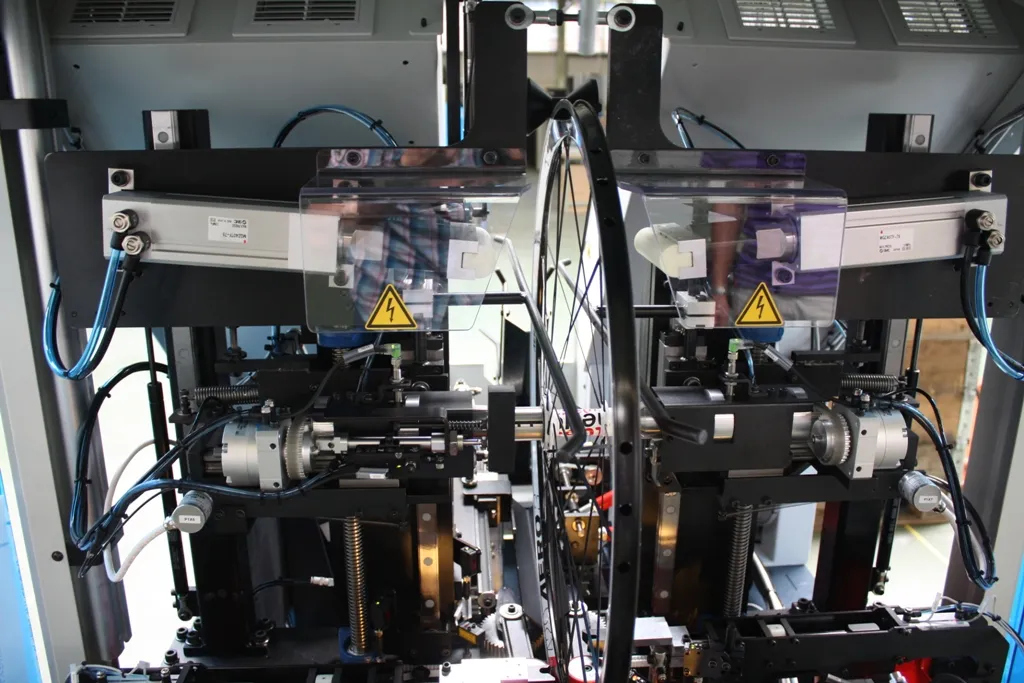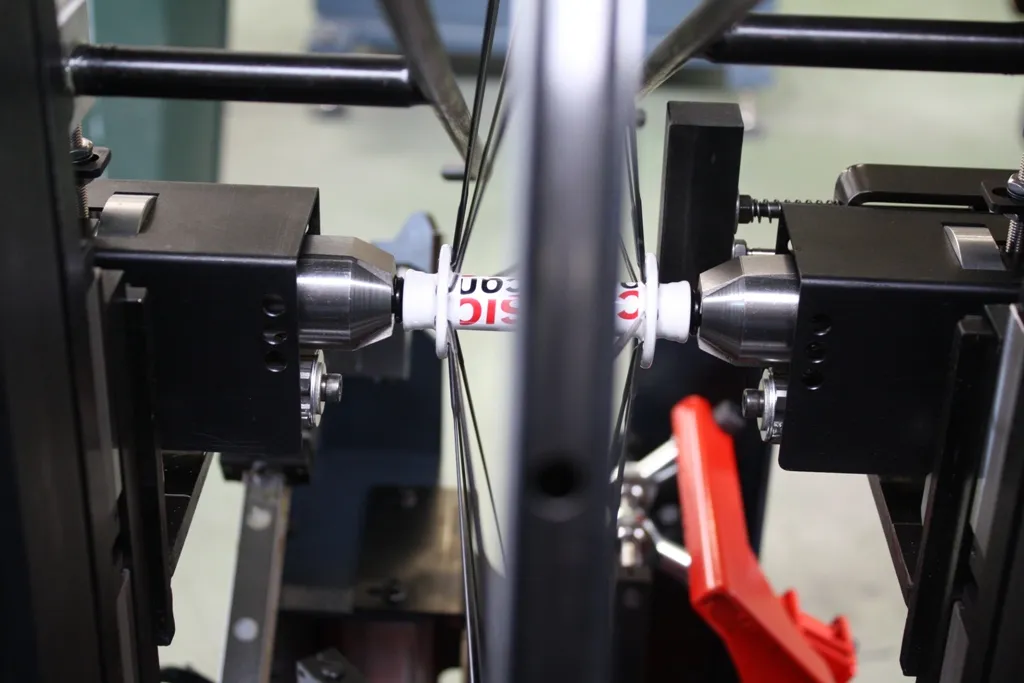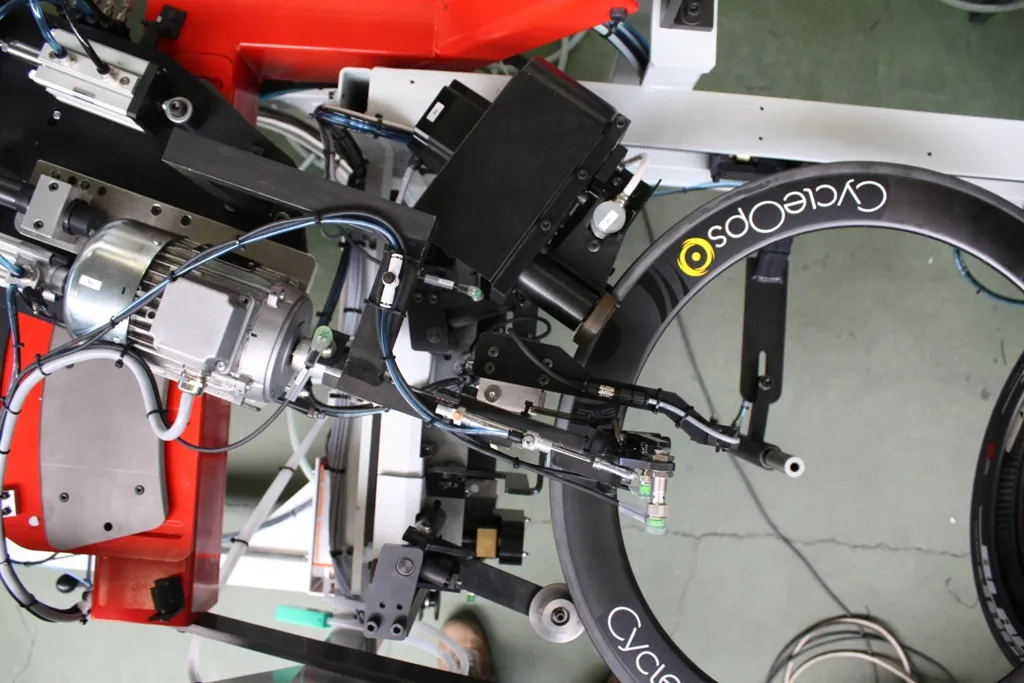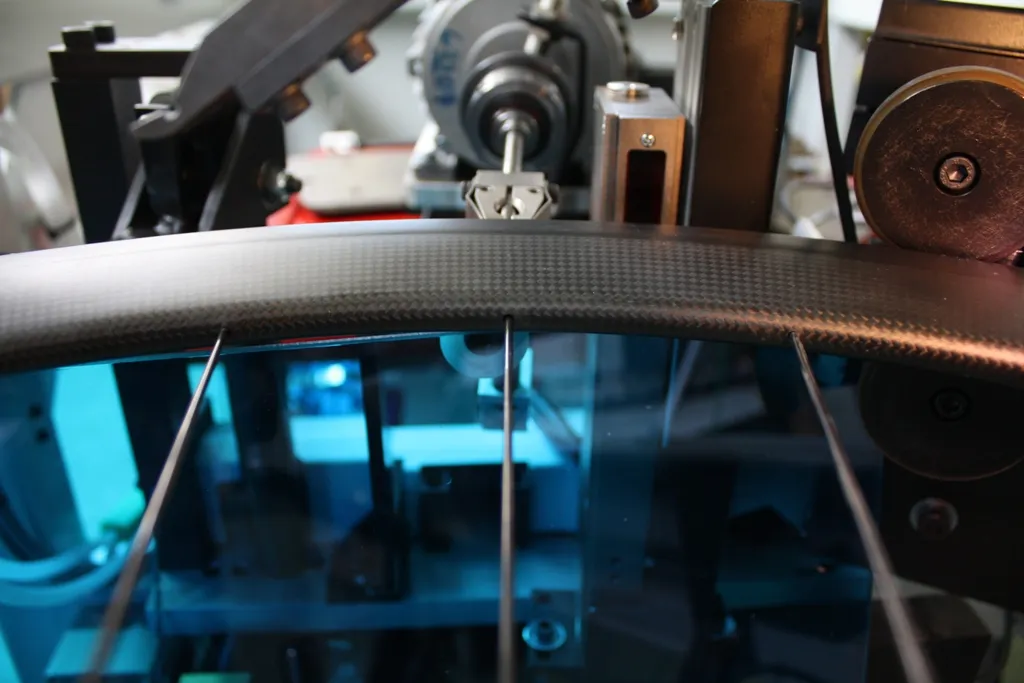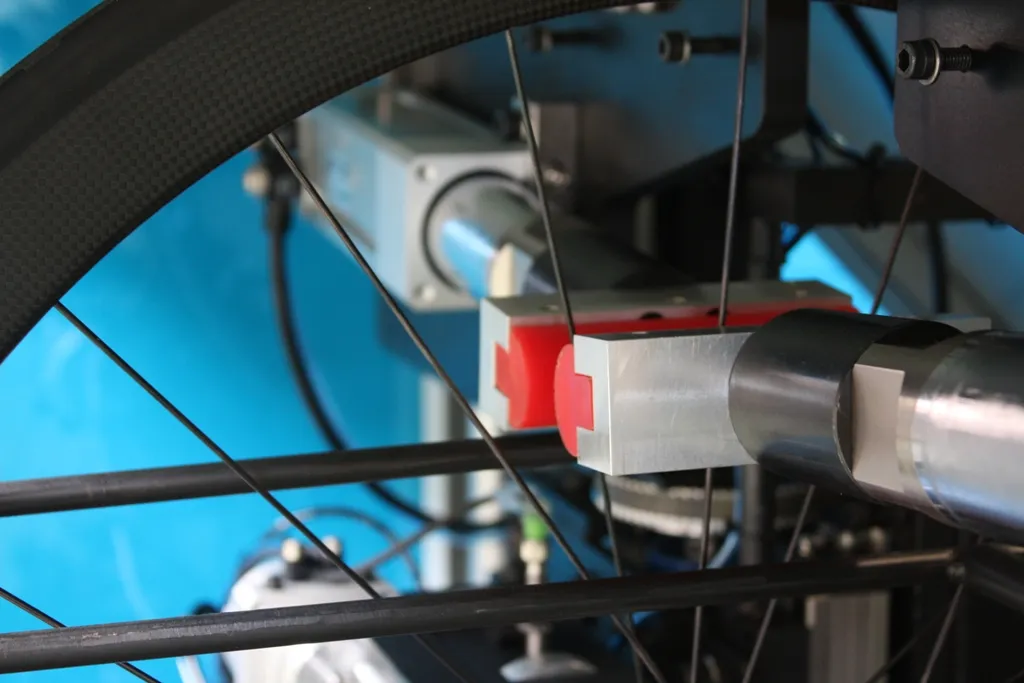Meet Holland Mechanics, the Dutch company whose revolutionary machines build an increasing number of high-end wheels for leading bike brands.
It’s a name that will mean little to most weekend warriors but many, perhaps the majority, are riding wheels made by the robots created by this small family-run company in Purmerend, north of Amsterdam.
And it’s not just the mass-market alloy hoops either. Six years ago, the company developed the first robots and processes to cope with carbon rims and the raft of new components such as inverted nipples that followed. It was a revolution for the wheel building industry because it meant the higher spoke tensions, balancing and stabilizing needed for the high-end wheelsets could be achieved quickly and efficiently – without the need to rely on hand building.
Big brands
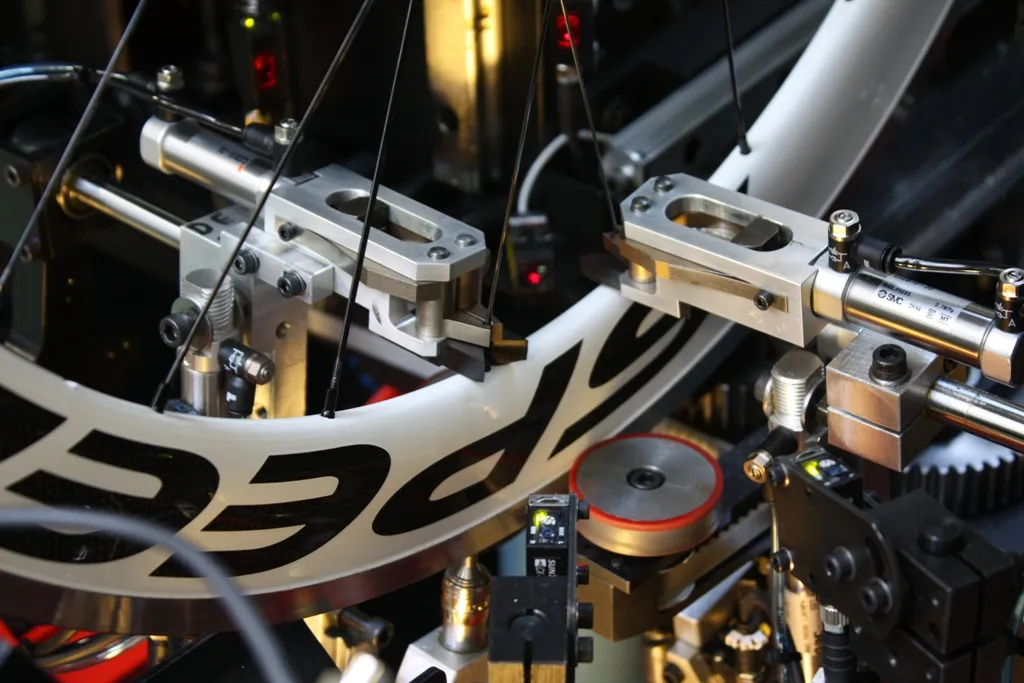
Holland Mechanics builds wheels for a number of big companies
The trend is now with us in a big way. The cost saving the machines offer means the company now has its Proline machines building wheels for Campagnolo, Mavic, SRAM, American Classic and Bontrager among numerous others. It’s not bad going for a company started 40 years ago to automate wheel building for mass-market bikes in the Low Countries. Before that, wheels were built by prisoners and people on social work schemes, said Holland Mechanics’ managing director Wouter van Doornik, and he should know – his grandfather created the first wheel-building machine.
Today, the computer controlled, number crunching machines have come a long way, and Van Doornik says they now set the quality standard for high-end wheel building too.
He told BikeRadar that the trend in high-end carbon wheels is leaning inexorably to automation. The precision and processing power of robots and the mechanical and software engineers that create them outstrip what can be achieved at the hands of even a master hand builder.
“With hand work every spoke has to get the right tension, have the right height differentiation to the rim and so on,” said Van Doornik. “You make a lot of changes by turning one nipple, and with the computer we can calculate all directions and so be much more accurate in the turning of the nipple.”
Tension precision
The wheel building machines in action
The above shows the machines in action. The revolution that Holland Mechanics delivered was the automation of outside truing, where torque is applied directly to the nipple head on the tyre side of the rim. Before this, spokes were tensioned on the nipple square, on the hub side of the spoke, with force applied through a gearing mechanism. It was a process that needed input from a number of the industry’s big players, such as Sapim and DT Swiss, but according to Van Doornik the changes meant that the higher spoke tensions needed for carbon-rimmed wheels could be achieved for the first time.
“I agree that before we made the change,” said Van Doornik, “The machine-built wheels were always less good than hand-built, but after we made the change to automated outside truing we could get exceptional accuracy.”
And it’s because of the precision that Holland Mechanics finds its Proline Carbon machine in demand even among smaller wheel brands in the market’s upper echelons – think brands such as Syntace and Enve.
“Some of the companies we’re sold machines to only make a few thousand wheels [a year], but they want to achieve top quality,” he said.
If the production limit is only ten wheels a day, hand building – which can take around 45mins to an hour for a high-end wheel – is probably still more economical, but anything upwards of that – especially when a premium for quality is factored in – means a robot starts to become an attractive proposition, claims Van Doornik.
“Before now, companies always looked primarily at how many wheels they had to make, so we only supplied companies making more than 20,000 wheels a year,” he said. “But nowadays if they want exceptionally high-quality wheels it takes more than an hour to reach those specs if they build by hand.”
There are another couple of factors that favour machines too. “Companies want to build closer to the market, because the variety of wheels is increasing,” he said.
“Especially with all the different colour combinations that are desirable now – red hub with red nipples for example – the companies want to build them just in time, to order. It’s a trend in the bicycle industry that when a customer makes an order, the company makes the product at the last possible moment before delivery.”
Recipe for quality
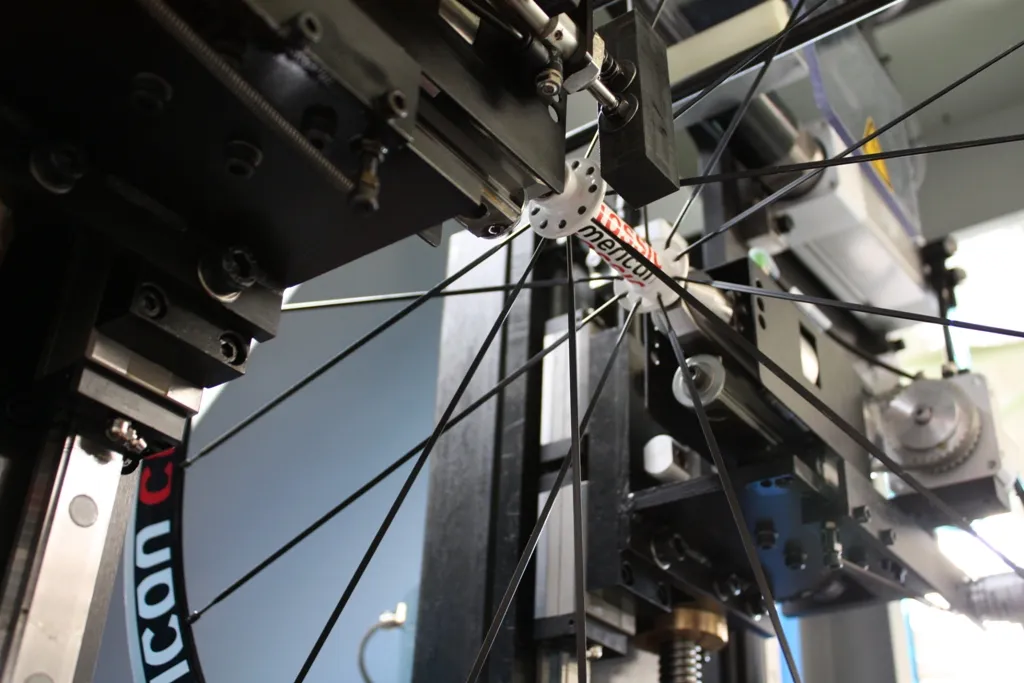
The master trueing robot
So with such a broad variety of brands using the same Holland Mechanics machines, is every wheel-build quality the same? The simple answer is no, says Van Doornik. His explanation is that manufacturers use the machines according to their own wheel building ‘recipe’ and more generally, the quality of the build improves the longer the hoop spends in the machine.
“Before, we always set the complete ‘recipe’ for the wheel but now we give that to the master wheel builder and he decides if they want to do stabilising once, twice, four times or whatever.”
But even if a wheel goes through multiple processes in the machine, its total time in there is a fraction of the time it would take to build it by hand: about 10 to 15 minutes compared to up to an hour.
So will the unstoppable march toward automation kill off the artisanal wheel builder, often said to work by feel and a deftness of touch that a machine can’t achieve? Judging by the current popularity for bespoke equipment and a human tendency to favour rarity over ubiquity, probably not. But for most of us riding high-end wheels, the future is built by robot.
